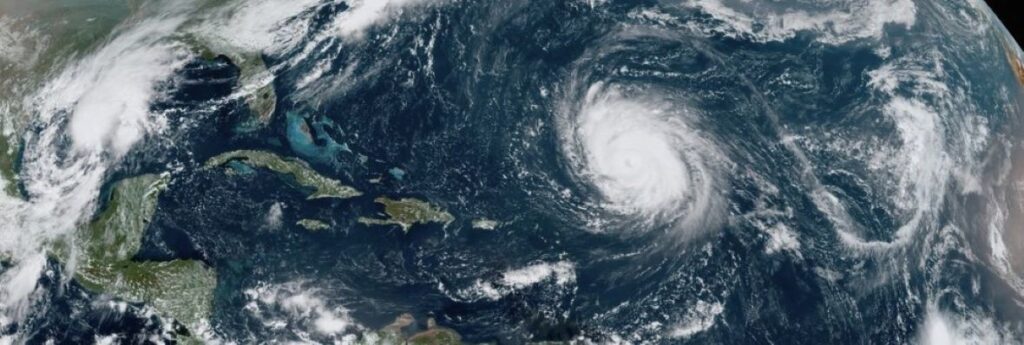Tropical Storm Lee strengthened into a hurricane on Wednesday as it churned through the open waters of the Atlantic on a path that would take it near the northeast Caribbean.It was expected to develop into an “extremely dangerous” major hurricane by Saturday, according to the National Hurricane Center.
The storm was located about 1,815 km east of the northern Leeward Islands. It had maximum sustained winds of 110 kph and was moving west-northwest at 22 kph.
Early projections showed it not making landfall but passing just northeast of the British Virgin Islands, which is still recovering from hurricanes Maria and Irma in September 2017.
Lee is the 12th named storm of the Atlantic hurricane season, which runs from June 1 to Nov. 30.
According to the National Hurricane Center, “Lee continues to strengthen at a quick pace,” the centre said, noting the storm was moving over very warm water and in a moist environment.
The hurricane is expected to generate life-threatening swells forecast to hit the Lesser Antilles on Friday and Puerto Rico and the U.S. and British Virgin Islands this weekend, the centre said.
The National Ocean and Atmospheric Administration warned in August that this year’s season would produce an above-normal number of storms. Between 14 to 21 named storms are forecast. Of those, six to 11 could become hurricanes, with two to five of them possibly becoming major hurricanes, the agency said.
In the Pacific, Jova strengthened into a Category 2 hurricane far off the southwest coast of Mexico and posed no threat to land. It was located some 970 km south of the southern tip of Baja California and moving west-northwest at 20 kph with winds up to 165 kph.

